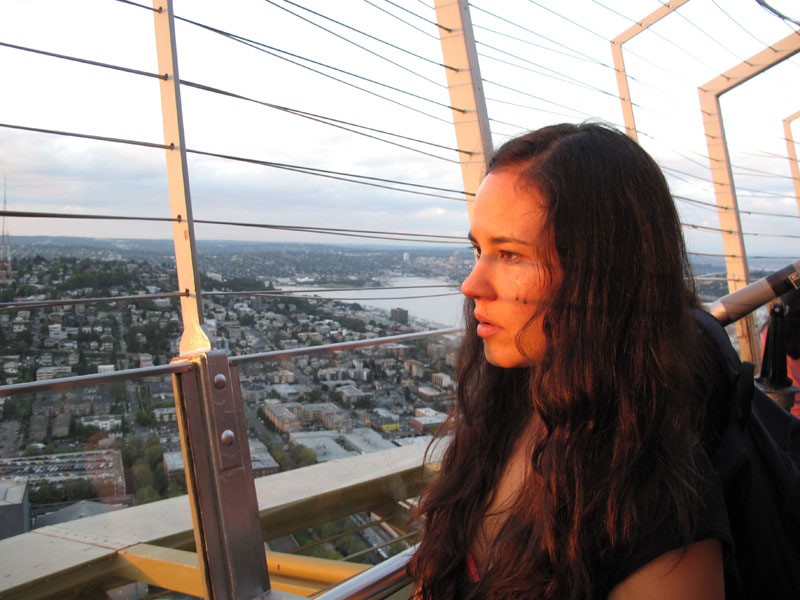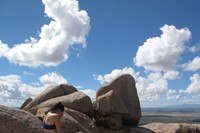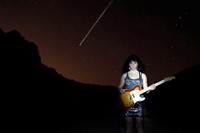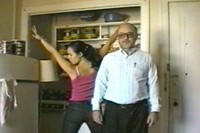Laurel Nakadate is part of the new generation of American artists, working with film, performance and photography to create highly charged scenes that examine sexuality, gender and youth within popular culture...
Laurel Nakadate is part of the new generation of American artists, working with film, performance and photography to create highly charged scenes that examine sexuality, gender and youth within popular culture. Over the past ten years, Nakadate has become best known for her early performance works. They often document her encounters with strangers, which she meets by chance or via classified advertisements on the internet. Following a large-scale exhibition at MoMa PS1 earlier this year, she opens her first UK solo show at The Zabludowicz Collection in London. It features a new series of work titled Star Portraits (2011), specially commissioned for the exhibition. These long exposure photographs capture young women in the Arizona desert, Nakadate over-exposing the film to create a deer-in-headlights effect as she captures strangers in the night. She explains, “The first moment I could clearly see these strangers, was an image on my camera. We never met in daylight and I never saw them clearly in real life.” Other highlights in the show include Oops (2000), a three-channel video installation that capture the artist and a stranger dancing to Britney Spears. AnOther spoke to the artist about the work she has produced over the past ten years, the internet and MTV.
Do you remember your first encounter with a stranger?
I first started making the work with strangers when I started graduate school at Yale University in 1999. I had just moved from Boston and in the weeks before school started I was just walking around this town that I wasn’t familiar with and I realised that people actually engaged with one another on the street in a way that they didn’t in the bigger cities. It all happened very naturally. I just started talking to people and then suddenly there were these moments where I realised that I needed to make work about real people in this town that I am living in.
Do you think your work toys with the boundary between trust and risk involved with these encounters?
I think there is always a heightened sensation of trust and risk happening in the videos. Equally if ordinary people were to meet through a chance encounter, the same dynamic would occur. There is always a moment of feeling each other out and trying to decide if we trust this person and do we want to engage with further activity with them. What is exciting for me about those early videos is that they really were like life. They were thrilling and scary in the same way life is.
Other works in the exhibition like the photographic series 365 Days: A Catalogue of Tears (2010), explore the dynamics between reality and what is contrived….
This piece of work stemmed out of the desire to make a performance. The original idea came from looking at pictures of people on social networking sites such as facebook. Everybody was posting happy pictures of themselves everyday and their daily status update was this created world of happiness through contemporary uses of photography. Being a photographer, I am always interested in the ways photography evolves and is used by consumers and by everyday people. In some ways, facebook becomes a kind of folk art. It is just normal people building lives through images in ways that we have done so over the last 100 years but that we haven’t shared in such a public manner. I thought there was this fantastic opportunity to do the exact opposite. To say 'you are all faking happiness everyday, well then I am going to force myself to cry everyday and then I am going to record that and crate a performance out of it'. In some ways it is a fabrication because I forced myself to do it, but in other ways it really isn’t because I did go through the motions of crying everyday. I don’t see it as a fiction. I see it as a constructed narrative that actually happened and I forced myself to do it and it was a performance. Just as with the early videos, they were all performances and I do see it as a sort of hybrid character of whom I was at the time. A character I created for the performance art but at the same time as a performance artist you are always using your own body. No matter what it is still always real.
Looking back to the early performance works, do you think your age and the fearlessness attached to youth played a significant role?
Absolutely. One of the things I love about the early work is that it is exactly the work that I could have made at that time. I am very proud of having made that work. I feel that the work was made at a very significant time in the world, in my life, within girl’s culture and pop culture. Oops (2000) was made before the Internet really got going and before everyone had email. I had to physically sit in front of MTV and watch it day in and day out, in order to wait for the music video to come on so that I could record it. Now you would just go onto youtube and bring up a song and download it for free. I think there was something about how hard it was to make those early videos.
Laurel Nakadate runs until December 11 2011 at The Zabludowicz Collection, London.
Text by Isabella Burley



